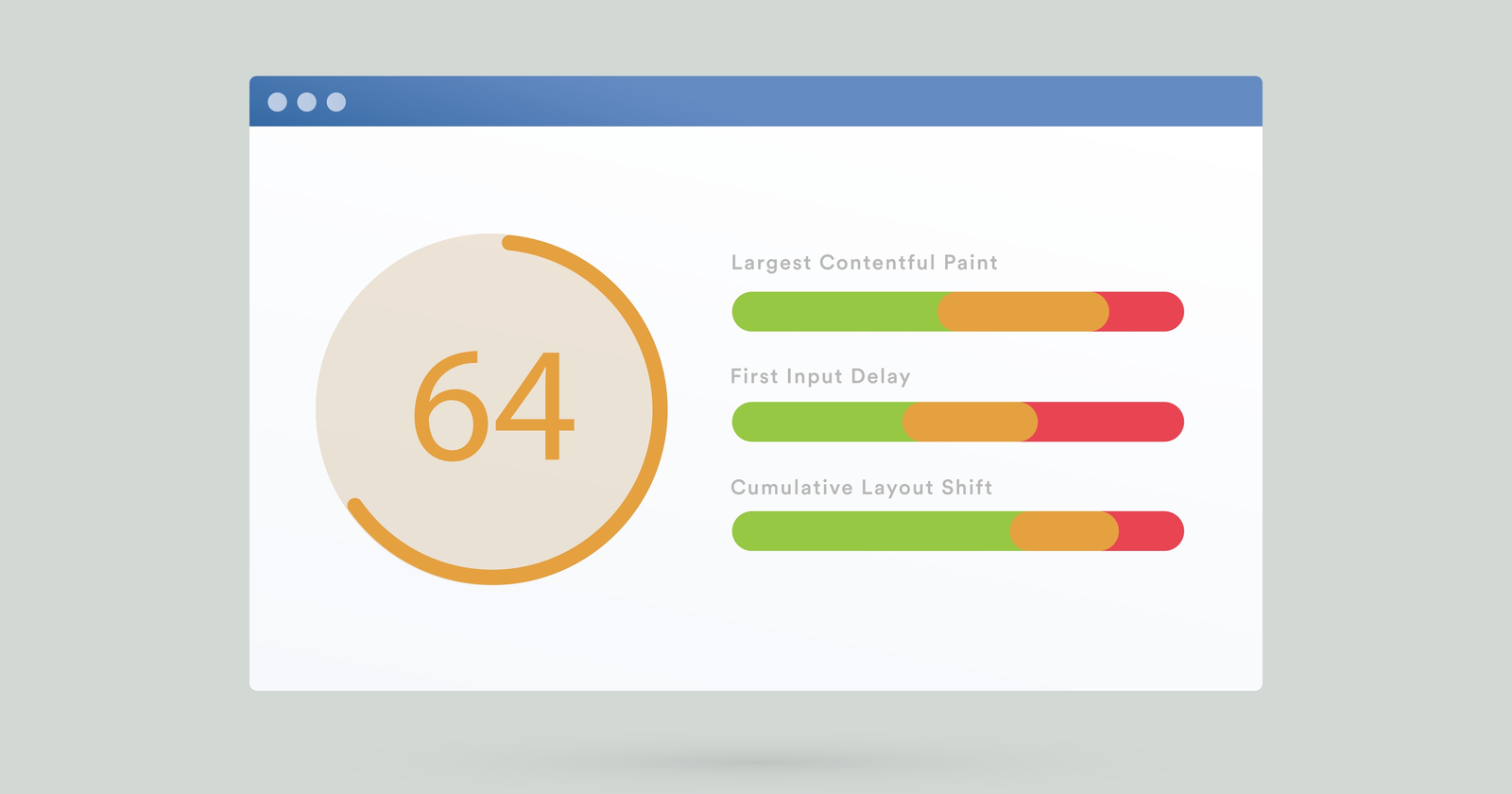How to Build a Topic Cluster in 10 Minutes
Don’t worry, they’ll tell you. Lots of SEOs seem to be raving about the benefits of topic clusters at the moment. But do topic clusters live up to the hype, or are they just another buzzword? In this guide,...

How do you know an SEO is into topic clusters? Don’t worry, they’ll tell you. Lots of SEOs seem to be raving about the benefits of topic clusters at the moment. But do topic clusters live up to the hype, or are they just another buzzword? In this guide, you’ll learn the following: Topic clusters are interlinked pages about a particular subject. People often get confused by the name variations. If there’s one thing SEOs love to do, it’s to create multiple terms for the same thing: Topic clusters, content hubs, pillar pages, hub and spoke. Whatever you call them, they are all essentially the same thing: topically grouped pages designed to cover a subject and rank. Simply put, a topic cluster consists of three components: If you nail those three elements, you have a topic cluster. Most people’s first encounter with topic clusters is via this graphic from Hubspot that illustrates the setup of a cluster: Topic clusters help search engines better understand the hierarchy of your website. As such, they may help search engines see your site as an authority on a specific subject. Basically, a topic cluster is just another way of laying out your website’s architecture. However, it’s worth pointing out here that Google has never specifically said to use topic clusters or mentioned anything about their benefits. The closest SEOs get to an official comment on topic clusters is this part from Google’s Webmaster Guidelines: Design your site to have a clear conceptual page hierarchy. This is open to interpretation. Like most things in SEO, topic clusters are a framework created by SEOs (not Google) to help get stuff done. Topic clusters are effective for SEO because they: So what do topic clusters actually look like? Below you will find three examples of topic clusters across different niches. If you want more examples, check out Kane Jamison’s awesome 30+ content hub examples or look through Ahrefs’ Beginner’s Guide to SEO for inspiration. All these examples below have the ingredients of a good topic cluster: This is a classic example of a topic cluster: one main page linking out to subpages (or chapters, in this case). Most of this content is evergreen, so the subpages don’t need to be updated too often. The best way to think of this cluster is as a long-form guide split into bite-sized chunks. In fact, that’s how Podia described it: This content cluster is another overview page linking to evergreen resources. But this time, it lists out many supporting articles (each grouped under a subtopic). As compared to Podia, which split its cluster into chapters, Wine Folly chose to group its keywords under subtopics and even created supporting text for each: This format works really well when covering a large topic (like wine). There are lots of different subtopics and keywords with different intents, so it makes sense to split the content this way. This cluster is massive. It’s set up like a visual database made up of hundreds of pages that are sortable and filterable (to an extent). Each page is labeled and grouped under a relevant category (e.g., Workouts For Men, Workouts For Women, Chest Workouts, etc.). And on the main page itself, you can immediately see what each category is about. And it looks like it’s working in terms of SEO: As you can see, there are different ways to build your topic clusters. The important thing is to pick the format you think will best display your content for Google and users. Most articles about building topic clusters look like this… But this article is going to be a bit different. The following guide will walk you through how to use free tools and Ahrefs to go from zero to a fully planned out topic cluster strategy in 10 minutes. Oh—and in a niche you know nothing about. DISCLAIMER: If you want to build a comprehensive topic cluster, there’s no substitute for doing proper research. But that’s not always possible due to a lack of budget or time. So treat this method as minimum viable niche research. Let’s get started. You need to pick a topic before you can start building a cluster. Whatever topic you pick, it needs to be tight enough so that it focuses on a single concept. But it also must be broad enough so that you’re not limiting the amount of content you can produce. Don’t overcomplicate it. The key here is to start thinking in terms of topics and not just keywords. Here are some criteria that will help you make good choices. Topics should: Struggling for ideas? Head over to Ahrefs’ Keywords Explorer, search for a niche-related term, and go to the Overview report. You can now look at Keyword ideas for—well, keyword ideas. This is a good place to start picking a topic to build a cluster around. Just don’t use terms that are too narrow here. For example, if you drop in a keyword like “personal injury lawyer for prisoners,” the results are not useful for the purpose of building a topic cluster: However, if you go a bit broader and drop in the keyword “personal injury lawyer,” you’ll get some good terms: These terms (in the “Questions” section) fit our criteria: informational, search traffic potential, and broad. However, the Terms match ideas are more like commercial investigation intent keywords. So we may want to go broader and use “lawyer” as a seed keyword instead. Why? Because I don’t think you’d use keywords such as “best personal injury lawyer” and “atlanta personal injury lawyer” to build a topic cluster—much less an informational topic cluster. Here’s what we get using the seed keyword “lawyer” instead: Once more, these terms fit our three criteria (and our original term “personal injury lawyer“shows up again). The key here is to pick a topic that has the potential to unlock more supporting topics. If you pick topics that are too narrow, you’ll not have enough keywords to choose from. Too broad and you’ll have to filter through many unrelated terms. In this section, we will walk through how to use Wikipedia to understand the common talking points of a topic so that you can do better, more informed keyword research. But first: Why use Wikipedia, though? Well, because it is the ultimate topic cluster. Every Wikipedia article fully covers a topic and interlinks between supporting subtopics—just like an SEO topic cluster does. Treat it as a guide for choosing topics to pursue. For this example, let’s build a topic cluster around the topic “personal injury lawyer.”Why this one? It’s because I know absolutely nothing about this industry. First up, see if there is a Wikipedia page for the topic, which there is. Now look for subtopics on the page. You can look at the internal links to find indications of subtopics: If you want to dig a bit deeper, you can run the URL through Ahrefs’ Site Explorer. Once you’ve done so, head over to the Organic Keywords report and review the keywords it ranks for. (Hint: look for informational keywords here.) You can even repeat the process for all the internal links on the Wikipedia page, as these will typically be related subtopics. Depending on the page/topic, you may have enough information to get started on building a topic cluster. If you don’t, move on to the next section to find more subtopics. In this section, we will walk through how to dive deeper into a topic and get more actionable data for building topic clusters. MissingTopics is a great free tool for finding the most important topics and entities on pages. It allows you to extract data from URLs, see common headings being used, and find topics missing from your content (which your competitors have). Copy the Wikipedia page URL. Then run it through MissingTopics: You’ll now have a list of (you guessed it) missing topics: Copy these and save them to your list. You’ll need to clean up the output a little (remove numbers, brackets, etc.). Also, make sure to review this output to find any generalized terms that may skew your results. In this example, one of the topics is “united states,” which will obviously skew your results: Once the output is cleaned, you’ll have some additional seed keywords to use in Ahrefs. Open up Ahrefs’ Keywords Explorer. Then paste in the missing topics as seed keywords. From here, you’ve got a few different methods for finding a bunch of keywords, thanks to Ahrefs’ functionality. Here are a few methods you can try: Sidenote. *Volume: Feel free to change this based on your topic/preference. Sometimes, you may need to set a minimum search volume for a client. Or maybe you only want to target keywords that get 100+ searches. Either way, update this accordingly or leave it blank. Do note that by default, Ahrefs sorts results by search volume. Now you’ll have a list of question-based keywords with a minimum search volume for you to target. Combine this with the Terms filter, and you can quite easily start building out keyword-focused FAQ pages per term. For example, filter by “tort,” and you’ll get enough keywords to build a useful informational post. By selecting a keyword modifier (“benefits” in the example above), you can drill down to find specific content formats. Some modifiers to try: Given that featured snippets typically show up in informational search results, this can be a quick way to filter out the junk and get to the types of keywords that work well as informational content. This method is also useful because it shows you informational terms, which you otherwise may have missed, outside of question-based keywords. Now you should have a healthy list of keywords on a topic you previously didn’t know anything about. You’ll probably have a bunch of keywords with similar meanings. So you’ll need to determine if you can target them all with one page or if you’ll need separate pages. Here’s a quick method using Ahrefs’ Keywords Explorer: (I definitely didn’t steal this tip from Tim Soulo.) Once you’ve worked out how many pages you need to create and what keywords to map to them, you’ve got to now create your clusters. For this stage, you may need a bit more than 10 minutes. My keyword research process didn’t take too long. It’ll likely be quicker than spending the next week cramming enough information about lawyers (or whatever unfamiliar topic you are researching). Despite being unfamiliar with this topic, I found a good number of keywords to create content around. When you are working in niches you don’t have a working knowledge of, you don’t know what you don’t know. That’s where this method can help. Still have questions about topic clusters? You’ll like the final section: Here are answers to a few common questions you may have about topic clusters: However you want to refer to them, topic clusters, content hubs, and pillar pages are all basically the same thing: a single place to house content around a specific topic. Google’s main goal is to give people the most relevant answers to their search queries as quickly as possible. As an SEO, your focus should be the same. Instead of thinking about an article as one that focuses on a keyword, think of keywords as topics. You want to try and cover everything Google expects to see within that topic in your content. Stock SEO answer time: It depends. There is no minimum or maximum number of pages you should create per topic cluster. Scroll up to the topic cluster examples. Some of those have a handful of pages, while some have hundreds. What you should do is create enough to cover the topic fully but not so many that you are potentially cannibalizing your rankings. That’s why the last step of the process (grouping subtopics with similar intent) is important. You don’t want to be building a topic cluster full of keywords competing against themselves. There you have it: how to build a topic cluster using Wikipedia, Ahrefs, and some SEO brainpower. Is this going to be the most comprehensive content hub? No. But it’s a starting point. And it only took 10 minutes, which is not bad considering we know nothing about the niche. Got a question on topic clusters or content strategy? Tweet me.
Example 1 – Podia’s guide to selling a profitable online course
 Topic: Online courseTitle: How to create, sell, and profit from an online course in 2021URL: https://www.podia.com/how-to-create-sell-profitable-online-course Number of pages in the cluster: Eight
Topic: Online courseTitle: How to create, sell, and profit from an online course in 2021URL: https://www.podia.com/how-to-create-sell-profitable-online-course Number of pages in the cluster: Eight
Example 2 – Wine Folly’s beginner’s guide to wine
 Topic: WineTitle: Wine Basics – A Beginner’s Guide to Drinking WineURL: https://winefolly.com/wine-basics-beginners-guide/ Number of pages in the cluster: 40+
Topic: WineTitle: Wine Basics – A Beginner’s Guide to Drinking WineURL: https://winefolly.com/wine-basics-beginners-guide/ Number of pages in the cluster: 40+
Example 3 – Muscle and Strength’s workout database
 Topic: WorkoutsTitle: Workout Routines Database: 1000+ Free Workout PlansURL: https://www.muscleandstrength.com/workout-routines Number of pages in the cluster: 700+
Topic: WorkoutsTitle: Workout Routines Database: 1000+ Free Workout PlansURL: https://www.muscleandstrength.com/workout-routines Number of pages in the cluster: 700+ 

Step 1. Choose a topic (to build a cluster around)



Step 2. Do topical keyword research with Wikipedia


Step 3. Find more subtopics (if you don’t have enough)
 Go to TopicsPaste in the Wikipedia URL you want to analyzeHit Submit
Go to TopicsPaste in the Wikipedia URL you want to analyzeHit Submit

Find high-volume “question” keywords:
 Toggle the Questions tabSelect Terms matchSet a minimum volume*
Toggle the Questions tabSelect Terms matchSet a minimum volume* 
Find specific content formats
 Toggle the All tabSelect Terms matchAdd a modifier to the Include filter
Toggle the All tabSelect Terms matchAdd a modifier to the Include filterFind keywords that trigger featured snippets
 Toggle the All tabSelect Terms matchIn “SERP features,” select Featured snippets
Toggle the All tabSelect Terms matchIn “SERP features,” select Featured snippetsStep 4. Putting together a topic cluster plan
Group subtopics with similar intent

Are “topic clusters,” “content hubs,” and “pillar pages” the same thing?
What is a topic in SEO?
How many pages should you have in a cluster?
Final thoughts

 FrankLin
FrankLin 




























.jpg&h=630&w=1200&q=100&v=6e07dc5773&c=1)


